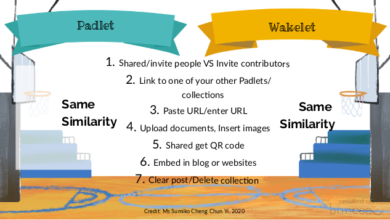What is Smoothstack?

Smoothstack is a technology company that operates as a workforce development firm, training entry-level tech professionals and connecting them with companies in need of skilled workers. Its model emphasizes rigorous training to create job-ready talent.
2. Understanding the Training Model of Smoothstack
Smoothstack’s training program is structured to offer practical, intensive education, typically lasting several months. Participants often enter with the promise of job placements upon completion. The company’s unique approach positions it as a bridge between graduates looking to enter the tech field and corporations needing vetted, prepared employees.
3. The Origin of the Smoothstack Lawsuit
The lawsuit against Smoothstack gained attention when former employees or trainees claimed that the company engaged in unfair practices. The origins of the legal case stemmed from disputes over contractual obligations that allegedly put participants at a disadvantage.
4. Allegations Against Smoothstack
The case revolved around several main allegations:
Contracts and Employment Terms
Many participants claimed that the contracts they signed contained ambiguous language that bound them to strict terms, making it difficult to exit the program without significant penalties.
Non-Compete Clauses
One of the most contentious points was the use of non-compete clauses. These clauses, critics argued, restricted former trainees from pursuing opportunities in the same industry for a certain period after leaving Smoothstack.
5. Key Legal Arguments in the Case
The lawsuit’s core arguments involved:
- Fairness of Contracts: Plaintiffs argued that the contracts were heavily skewed in favor of the company.
- Employment Classification: Whether trainees were unfairly categorized in ways that affected their rights and compensation.
- Non-Compete Legitimacy: The enforceability of the non-compete agreements was scrutinized as potentially violating labor laws.

6. Employee Experiences and Testimonials
Numerous former employees provided accounts of their experiences, highlighting challenges such as unclear terms and high exit fees. These testimonials painted a picture of how the company’s policies impacted them personally and professionally.
7. The Legal Process and Timeline
The lawsuit followed a complex legal timeline, beginning with the initial filing and leading up to court hearings. Both sides presented arguments over several months, involving multiple procedural steps and motions.
8. Outcome of the Lawsuit
Verdict or Settlement
The outcome of the case was pivotal in shaping public perception. While some lawsuits end in settlements, which might include non-disclosure agreements, others go to trial, where a definitive ruling is provided.
Statements from Both Parties
Following the conclusion, both Smoothstack and the plaintiffs issued public statements. These often highlight their perspectives on the outcome and potential next steps.
9. Broader Industry Implications
Training Programs in the Tech Sector
This case raised questions about similar training models employed across the tech industry. Companies that blend training with employment must balance competitive business practices with fair treatment of employees.
Employment Contracts and Worker Protections
The lawsuit brought attention to the need for clearer guidelines regarding employee rights, particularly for those in specialized training programs.
10. Expert Opinions on the Lawsuit
Legal experts weighed in on the case, discussing potential precedents set by the outcome and how it could influence future employment contracts in tech training programs.
11. How Common Are Similar Cases?
Cases involving disputes over employment contracts and non-compete clauses aren’t unique to Smoothstack. The tech industry, in particular, has seen various lawsuits involving similar disputes over worker rights and training program terms.
12. Lessons for Tech Companies
This lawsuit serves as a cautionary tale for other firms. Key lessons include the importance of transparent contract language, fair non-compete clauses, and the need for mutual benefit between company interests and employee rights.
13. Regulatory Changes and Potential Reforms
Following high-profile cases like the Smoothstack lawsuit, lawmakers and industry bodies may push for reforms. These could include stricter oversight of training programs and more stringent requirements for fair contractual practices.
14. Advice for Employees Joining Similar Programs
For individuals considering training programs similar to Smoothstack’s, it’s essential to:
- Read Contracts Carefully: Understanding the terms and potential obligations is crucial.
- Seek Legal Counsel: Consulting a lawyer before signing can prevent future disputes.
- Research Program Reputation: Look at reviews, testimonials, and potential red flags.
15. Future Outlook for Smoothstack
Despite the challenges posed by the lawsuit, Smoothstack has the potential to adapt and continue its operations. Changes to policies, more transparent practices, and enhanced communication with trainees could bolster its reputation.
16. FAQs about the Smoothstack Lawsuit
- What were the main allegations? The main points were unfair contract terms and non-compete clauses that limited employment opportunities.
- Did Smoothstack admit any wrongdoing? The company’s official statements often clarify their stance, usually without admission of guilt.
- How did this affect current trainees? The lawsuit highlighted concerns but did not necessarily impact ongoing programs unless specified by court orders.
- Are such non-compete clauses common? Yes, though their enforceability varies by region and industry.
- What can be done to avoid issues like this? Companies should prioritize clarity in their contracts and align training policies with labor regulations.
- Will this change how training companies operate? Potentially, as heightened scrutiny may encourage more balanced contract practices.
17. Conclusion
The Smoothstack lawsuit served as a wake-up call for tech training programs and their participants, emphasizing the need for fair, clear, and balanced contract terms. For prospective trainees and employees, it underscored the importance of due diligence and understanding one’s rights before signing on with a training provider.




